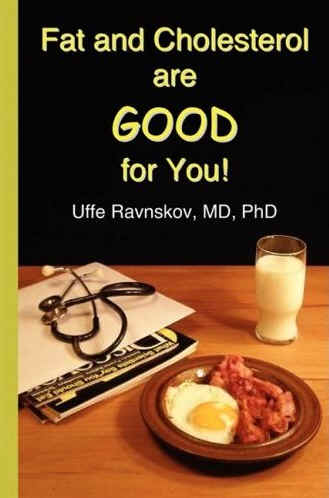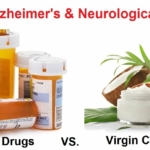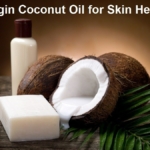A new study published in JAMA Ophthalmology titled, “Association of Statin Use With Cataracts: A Propensity Score-Matched Analysis,” reveals that the top-grossing, cholesterol-lowering drug class known as statins is significantly increasing the risk of cataracts within exposed populations.[1]
Statin-induced eye damage will be a surprising finding to some, especially to statin drug advocates who have argued that the purported ‘antioxidant’ effects of statins ‘may slow the natural aging process of the lens.’ This latter, strictly theoretical benefit is increasingly being disproved by the biomedical literature. In fact, last year, we reported in an article titled, “Blind To The Truth: The Eye-Damaging Effects of Statins,” on findings published in Optometry and Vision Science, revealing that statin drugs users have a 48% higher risk of pathological eye lens changes commonly associated with cataract formation.
A cataract is a clouding of the lens of the eye which leads to a decrease in vision, and is a leading cause of blindness in the world. The most commonly identified causes are aging, trauma and excessive UV radiation exposure, along with a still poorly understood genetic component. While there is preclinical evidence that the opacity of the lens can be reversed through natural substances such as wheatgrass,[2] the most common conventional approach is to treat the condition with surgery, which does nothing to mitigate or undo the underlying causes.
Researchers at San Antonio Military Medical Center, San Antonio Texas, compared the risks for development of cataracts between statin users and nonusers, using a military health care system database. The study design was described as follows:
“Based on medication fills during fiscal year 2005, patients were divided into 2 groups: (1) statin users (received at least a 90-day supply of statin) and (2) nonusers (never received a statin throughout the study). Among 46 249 patients meeting study criteria, we identified 13 626 statin users and 32 623 nonusers.”
The main results were reported as follows:
“For our primary analysis, we matched 6972 pairs of statin users and nonusers. The risk for cataract was higher among statin users in comparison with nonusers in the propensity score-matched cohort (odds ratio, 1.09; 95% CI, 1.02-1.17). In secondary analyses, after adjusting for identified confounders, the incidence of cataract was higher in statin users in comparison with nonusers (odds ratio, 1.27; 95% CI, 1.15-1.40). Sensitivity analysis confirmed this relationship.”
In other words, the risk for cataract was between 9% and 27% higher in statin users, leading the study authors to conclude: “The risk for cataract is increased among statin users as compared with nonusers. The risk-benefit ratio of statin use, specifically for primary prevention, should be carefully weighed, and further studies are warranted.”
What is important to point out is that the human eye is an extension of the nervous system, which is the second most lipid- and cholesterol-concentrated tissue type next to adipose tissue in the human body. The lenses of mammals, but particularly the human lens, is extremely stable due in part to its cholesterol content. Amazingly, this is why the only reported lipid remaining in a frozen mammoth 40,000 years after its death was from its lens membranes.[3] Therefore, given the crucial role that cholesterol plays as a structural and functional biomolecule within the eye, is it any wonder thatcholesterol-inhibiting drugs adversely affect them?
Also, considering that statin drugs bear a wide range of additional health risks, with over 300 known adverse effects associated with their use extensively documented in the biomedical literature [see our Statin Drug database], the reported cardiovascular benefits of this drug class may not be significant enough any longer to justify their use. To the contrary, the research increasingly indicates that statin drugs are both muscle-damaging (myotoxic) and nerve-damaging (neurotoxic) – a concerning heart-damaging (cardiotoxic) combination, as the heart muscle is a highly nerve-dense muscle.
At the very least, patients need to be adequately informed of their risks in order for the medico-ethical principle of informed consent to even be possible. Failing that, the drug-based default approach in using statin drugs for the primary and secondary prevention of cardiovascular disease violates the most basic ethical and likely legal rights of their patients.
For extensive documentation of the potential adverse health effects of statin drugs, as well as research into scientifically vetted natural alternatives, read any of our recent reports on the topic:
- Cholesterol Lowing Statins Found To Damage Peripheral Nerves
- Statin Drugs Found To Accelerate Arterial Calcification
- Statin Drugs Linked To Arthritis, Heart Trouble And More
- Confirmed Again: Statin Drugs Calcify The Coronary Arteries
- Statins Provide No Benefit: Study of 4 Million People
- Are Statin Drugs Killing The Health Benefits Of Omega-3 Fat?
- A New Greek Name for Statin Toxicity: Polymyalgia Rheumatica
- Statins Raise Diabetes Risk by 48% for Postmenopausal Women
- Statin Drugs Linked To Worsening Osteoarthritis Of The Knee
- Sugarcane Extract Superior To Cholesterol-Lowering Drugs?
- Chocolate Gives Statins A $29 Billion Run For Their Money
- How LOW Cholesterol Can Harm Your Health
There already exists an extensive body of preclinical and even some clinical research on natural cholesterol-lowering substances. We have spent years indexing this research in order to make it freely available on our natural research database. You can view that research here [Cholesterol-Lowering Substances]. Please be aware that by providing access to information we are not providing medical advice. It is very important for the health consumer to understand, as well, that when combining natural interventions with drugs you risk profound, even deadly interactions. It is advisable, therefore, to search out the help of a licensed health professional, preferably with an integrative medical background to assist you with your health problems.
For additional research, please feel free to visit (or share with your health practitioner) our research page: Health Guide: Statin Drugs.
For health care practitioners, consider using our Professional Database Features, to greatly enhance your ability to retrieve, comprehend and disseminate the biomedical information on our multiple databases.
Read the full article here: http://www.greenmedinfo.com/blog/cholesterol-drugs-linked-eye-damage-jama-study-confirms-anew-0
References
[1] Jessica Leuschen, Eric M Mortensen, Christopher R Frei, Eva A Mansi, Vasudha Panday, Ishak Mansi.Association of Statin Use With Cataracts: A Propensity Score-Matched Analysis. JAMA Ophthalmol. 2013 Sep 19. Epub 2013 Sep 19. PMID: 24052188
[2] GreenMedInfo.com, Research > Ailments > Index: C’s > Cataract
[3] Douglas Borchman1,* and Marta C. Yappert. Lipids and the ocular lens J Lipid Res. 2010 September; 51(9): 2473–2488. doi: 10.1194/jlr.R004119 PMCID: PMC2918433





 Research Continues to Show Virgin Coconut Oil's Effectiveness in Treating Cancer
Research Continues to Show Virgin Coconut Oil's Effectiveness in Treating Cancer Coconut Oil Continues to Benefit Alzheimer's Patients over Drugs as Studies Continue for Neurological Benefits
Coconut Oil Continues to Benefit Alzheimer's Patients over Drugs as Studies Continue for Neurological Benefits How the Simple High-Fat Low-Carb Ketogenic Diet Continues to Change People's Lives
How the Simple High-Fat Low-Carb Ketogenic Diet Continues to Change People's Lives New Studies Continue to Show that Coconut Oil is the Best Oil for Treating Skin Conditions and Maintaining Healthy Skin and Teeth
New Studies Continue to Show that Coconut Oil is the Best Oil for Treating Skin Conditions and Maintaining Healthy Skin and Teeth New Study Confirms Health Benefits of Coconut Oil and USDA False Claims Against It
New Study Confirms Health Benefits of Coconut Oil and USDA False Claims Against It